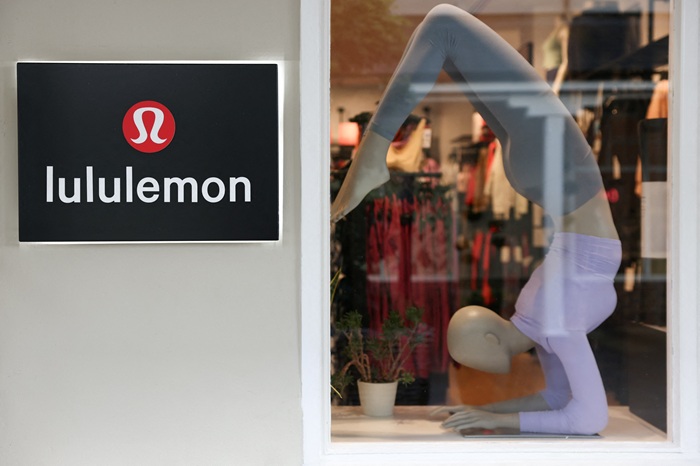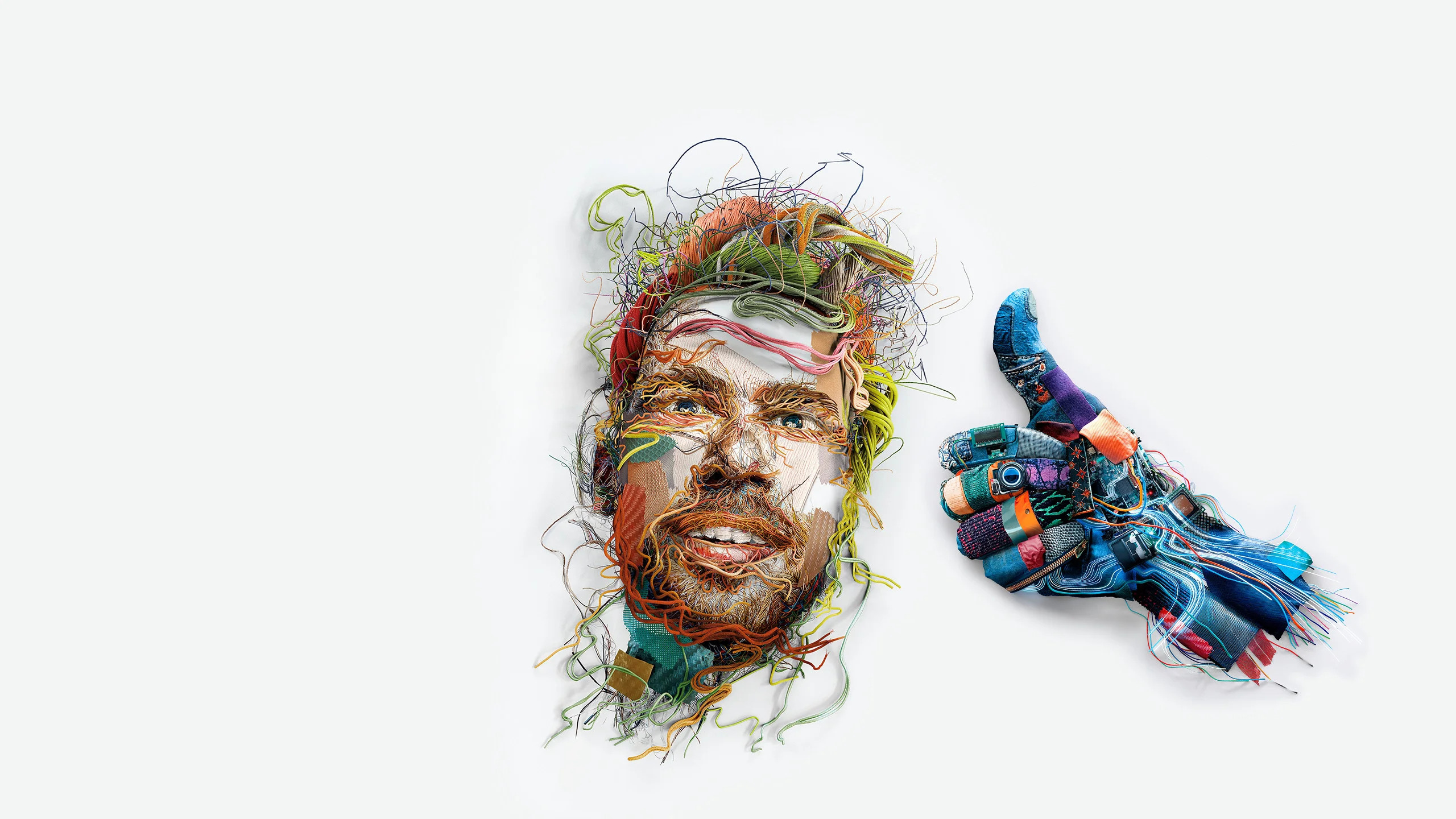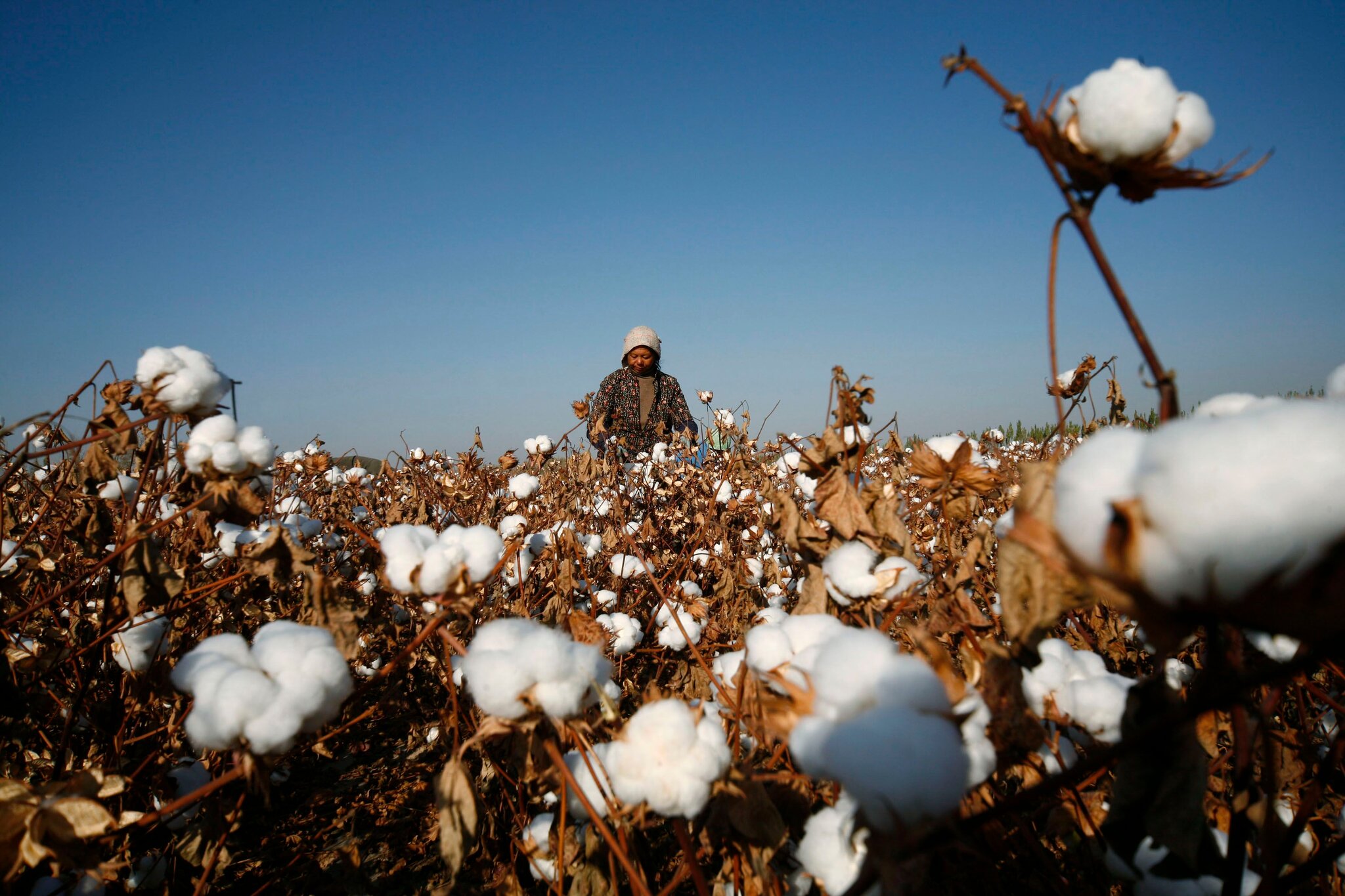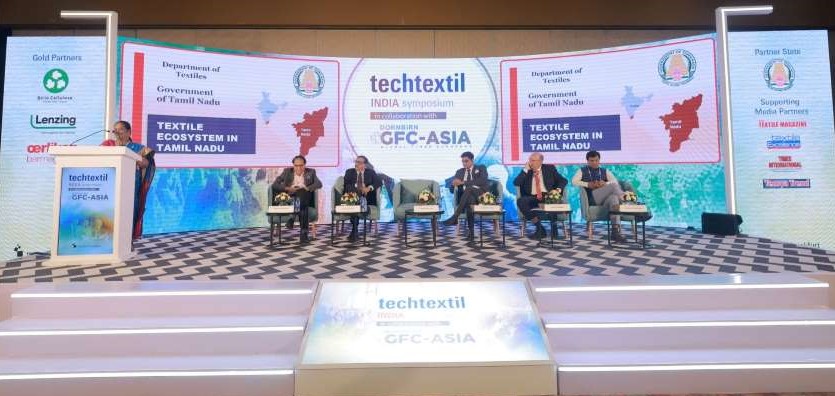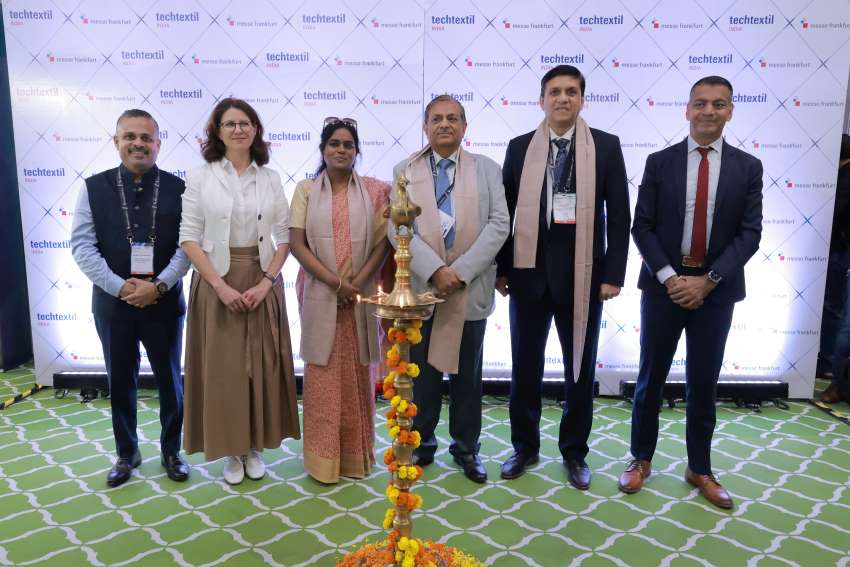FW
Freudenberg Performance Materials’ first standalone sustainability report focuses on the technical textiles segment.
Committed to the UN Brundtland definition of sustainability, Freudenberg Performance Materials aims to minimize waste and emissions while reducing its consumption of energy, materials, and water. The company aims achieve carbon neutrality at all of its sites (Scope 1 and 2) by 2045.
In 2024, Freudenberg Performance Materials made notable progress toward its sustainability goals. It reduced CO2 emissions by another 3 per cent, representing 29 per cent reduction compared to the baseline year 2020. Besides, the company improved energy efficiency by 10 per cent despite a rise in production levels. It increased purchases of renewable energy to 30 per cent of all purchased electricity to power 25 production units.
Further, the company increased its share of green energy in total energy consumption by 26 per cent to 13.5 per cent. It also replaced its largest gas-powered asset with wet-scrubber technology, resulting in a reduction of approximately 4,000 tons of CO₂.
In addition, Freudenberg Performance Materials established medium- and long-term sustainability goals to guide short-term planning and decision-making. The company started implementing software to calculate the Product Carbon Footprint (PCF) in preparation for the upcoming EU ‘Ecodesign for Sustainable Products Regulation’ (ESPR).
Non-profit organization behind the Global Organic Textile Standard (GOTS), Global Standard has launched its annual campaign, #BehindTheSeams 2025. This year, the campaign expands beyond the textile industry for the first time, partnering with major brands like Tony’s Chocolonely to champion social responsibility and sustainability.
With the UN’s Sustainable Development Goals (SDGs) deadline just five years away, the textile industry is falling behind. A recent McKinsey analysis finds, two-thirds of fashion brands are not on track to meet their climate goals. In response, GOTS is mobilizing its network of 15,000 facilities in 87 countries to inspire action.
Running from September 1-30, the campaign will take consumers and industry professionals ‘behind the seams’ of textile production to educate them on what truly responsible manufacturing means. The goal is to empower both groups to make more informed and conscious purchasing decisions.
Holger Stripf, Head-Marketing, Global Standard, emphasizes, GOTS is more than a standard -it's a movement. By spotlighting the people, values, and partnerships driving change, the campaign aims to inspire both corporations and consumers to act in the interest of people and planet, he adds.
This year's campaign includes influential partners from other sectors, such as the German football team FC St Pauli, which will serve as a cultural ambassador for conscious consumer choices, and Tony’s Chocolonely, which is joining the GOTS campaign to help end child labor. These partnerships aim to raise broader awareness of the campaign's mission and the work being done across industries.
Gareth Cullen, Regional General Manager, Nudie Jeans, highlights, being a part of this campaign allows the brand to amplify this message globally and show that when likeminded organizations come together, we can inspire consumers to make choices that protect both people and planet."
As part of the campaign, GOTS is inviting its global community to join the conversation on social media. The campaign's landing page and the official Global Standard Instagram channel will feature exclusive giveaways, educational videos, and interactive content designed to make creating change both meaningful and engaging.
Founded in 2006, GOTS has become the world’s leading standard for organic textiles, ensuring integrity from fiber to finished product. The #BehindTheSeams 2024 campaign achieved over 151 million impressions, reached 70 million unique consumers, and generated over 230,000 microsite visits. This year's edition promises to be even bigger, reinforcing the message that collective action is the key to meaningful change.
Arise Integrated Industrial Platforms (IIP) is positioning itself as a key enabler for investors in Africa's apparel and textile sectors, addressing a range of common challenges to help them leverage opportunities like the AGOA Free Trade Agreement. The company provides a comprehensive suite of solutions that streamline operations, from initial setup to long-term sustainability.
One of the primary hurdles for investors is securing suitable land with reliable infrastructure. Arise IIP solves this by offering IFC-compliant industrial land with clean titles, complete with 24/7 access to electricity, water, and sewage. They also install substations to stabilize power and offer solar power infrastructure, which helps mitigate the risk of machinery damage and factory downtime.
Navigating bureaucratic processes is another significant challenge. Arise IIP simplifies business setup by providing complete documentation assistance and directly coordinating with government departments. They offer pre-approved land and pre-negotiated tax exemptions, reducing the complexity and delays typically associated with obtaining permits and licenses.
For factory construction and setup, Arise IIP provides access to a network of pre-vetted local contractors and offers support for price negotiations. They also have ready-to-use factory sheds available for rent under flexible plans, which eliminates the need for investors to build from scratch.
A reliable supply of raw materials is crucial for the textile industry. Arise IIP has established partnerships with ministries and cooperatives to ensure a consistent, year-round supply. They also offer warehousing and logistics support, managing the transportation of materials from the warehouse to the factory.
Additionally, Arise IIP provides crucial support for labor-intensive operations. They have successfully recruited over 20,000 workers and have established Garmenting Training Centers in Togo and Benin to ensure a skilled workforce. The company also assists with workforce transportation, catering, and is developing low-cost housing.
Beyond the initial setup, Arise IIP helps investors with market linkages and certifications, facilitating joint ventures and providing support for Go-to-Market strategies, especially for exports to the US and EU under agreements like AGOA. They also have in-house teams that assist with sustainability planning, waste management, and obtaining global certifications.
With a presence in over 15 African countries, Arise IIP's integrated industrial zones are designed for efficiency, featuring drone-planned layouts, multi-lane roads, and integrated shipping facilities like Inland Container Depots, creating a robust ecosystem that supports the entire value chain.
Eastman Naia unveiled a new cellulose acetate filament yarn at Intertextile Shanghai 2025,. Developed in partnership with Huafon Chemical, this new yarn boasts higher tenacity, making it ideal for creating premium, lightweight fabrics.
Eastman has a strong network of mills and fabric trading partners in China, working together to develop some of the most advanced acetate-based fabrics on the global market. This collaboration was strengthened on August 13 when Eastman and Huafon Chemical announced a formal strategic partnership to establish a joint facility. The new facility will be dedicated to producing Eastman Naia cellulose acetate filament yarns in China, demonstrating Eastman's long-term commitment to the region. This localized production will create a more agile supply chain to better meet the market's demand for high-quality, sustainable textile materials
The new Naia acetate filament yarn is already popular with both high-end luxury brands and high-street fashion retailers globally, and is used for ready-to-wear apparel and linings due to its luxurious, silky feel, beautiful drape, and rich luster.
Eastman Naia has already begun collaborating with three Chinese mills - Colorful, GreenSilk, and XinMin Textiles - on new fabric developments. The new yarn is expected to be launched to additional domestic and international customers in H1, FY26.
A global leader in apparel manufacturing, Crystal International Group is spearheading advancements in textile technology through a groundbreaking collaboration with the Hong Kong Productivity Council (HKPC). Funded by the Innovation and Technology Commission, the project focuses on applying innovative graphene electrothermal technology - specifically, reduced graphene oxide (r-GO) - to create a new generation of thermal clothing.
The project leverages HKPC's comprehensive solutions to optimize the r-GO composite coating, fine-tuning its electrical conductivity for maximum heat output. A precision smart-screen-printing system seamlessly integrates the coating into garments, significantly boosting electrothermal efficiency while cutting production costs. This innovation enhances the competitiveness of Hong Kong's textile industry by delivering higher productivity, lower resource consumption, and a sharper market differentiation.
Having commenced in 2021, the project has progressed through two key phases. In the first phase, Crystal International’s knits division served as the Industry Co-Applicant, providing essential funding and technical contributions for the research and development of multi-functional fabrics with graphene coating. On being integrated with power devices and a voltage supply, the r-GO technology enables the thermal properties of the clothing. Following the completion of this phase, Crystal International obtained a utility model patent in China with technology authorization from HKPC.
In 2023, the project entered its second phase under the Public Sector Trial Scheme, led by HKPC. This phase focused on applying the technology to finished garment production. Prototypes and electrothermal clothing samples were fabricated, and wearer trials were conducted at public elderly care homes, including the Tung Wah Group of Hospitals' Wong Cho Tong Day Care Centre for the Elderly. These trials successfully demonstrated the practical application of the clothing in providing enhanced comfort and warmth for elderly residents. The thermal clothing passed rigorous lab tests for durability (rubbing and washing), electrical safety, and skin irritation, and the r-GO fabric showed superior heating efficiency compared to traditional electrothermal fabrics.
The project not only showcases the company’s excellence in innovation but also addresses the needs for flexible electrothermal fabric in the industry, says Danny Cheng, General Manager – Technical Service and Support, Crystal International.
Founded in Hong Kong in 1970, Crystal International Group Limited is a global leader in the apparel manufacturing industry. The company operates a multi-country manufacturing platform with over 20 production facilities across five countries including Vietnam, China, Cambodia, Bangladesh, and Sri Lanka.

The story of America’s clothing industry is one of contrast: booming demand from consumers but shrinking capacity at home to produce what they wear. As globalization deepens its hold on the apparel trade, the US garment sector has steadily ceded ground, both in domestic production and global exports, while imports continue to swell.
Domestic output shrinks against the economy’s growth
At the turn of the millennium, US garment exports was a modest yet notable share of the economy which was 0.55 per cent of GDP in 2000. Two decades later that contribution has withered to just 0.21 per cent in 2024.
Table: US garment exports as a per cent of GDP
|
Year |
Garment exports |
|
2000 |
0.55% |
|
2002 |
0.52% |
|
2004 |
0.53% |
|
2006 |
0.50% |
|
2008 |
0.48% |
|
2010 |
0.47% |
|
2012 |
0.47% |
|
2014 |
0.46% |
|
2016 |
0.43% |
|
2018 |
0.40% |
|
2020 |
0.34% |
|
2022 |
0.31% |
|
2024 |
0.21% |
This decline underscores a broader reality: the US has lost its competitive edge as a garment exporter. Once part of the backbone of America’s manufacturing identity, clothing production has been increasingly sidelined by industries with higher value-add or faster innovation cycles. As per a senior analyst at the US Department of Commerce garment exports tells a bigger story about American industry and that is, they are no longer making clothing for the world. Instead, they are largely consuming what the world makes for the US.
Imports fill the gap
As domestic capacity eroded, imports rose to meet America’s insatiable demand for affordable fashion. The value of apparel brought into the US has more than doubled over two decades, from $46.3 billion in 2000 to $117.5 billion in 2023. Volume tells a similar story. Imports jumped from 22.1 billion square meter equivalents (SME) in 2000 to 39.8 billion SME in 2023.
Table: US apparel imports in value and volume
|
Year |
Imports value ($ bn) |
Imports volume (SME bn) |
|
2000 |
46.3 |
22.1 |
|
2005 |
67.8 |
30.3 |
|
2010 |
75.2 |
29.5 |
|
2015 |
81.6 |
31.2 |
|
2020 |
69.3 |
26.8 |
|
2022 |
102 |
36.5 |
|
2023 |
117.5 |
39.8 |
Source: U.S. Department of Commerce, Office of Textiles and Apparel (OTEXA)
While the dip in 2020 reflects pandemic-related disruptions, the post-pandemic rebound has been dramatic, with imports hitting historic highs. The growing dependency is clear: without foreign producers, US retailers would struggle to stock their shelves.
Why the shift?
Four forces underpin this transformation.
Labor costs: Wages in Asia and other developing regions remain far below US levels, giving overseas producers a decisive edge.
Globalized supply chains: Modern logistics make it seamless for American brands to source garments from multiple countries with efficiency.
Consumer price sensitivity: The appetite for ‘fast fashion’ at low prices drives retailers to prioritize imports.
Branding over manufacturing: US companies are increasingly investing in design, retail and marketing while leaving production to offshore partners.
As an industry consultant says, American apparel brands no longer see themselves as manufacturers. They are curators of lifestyle and identity. The sewing machines are thousands of miles away.
The bigger picture
The interplay between falling exports and rising imports signals a structural redefinition of the US apparel sector. Domestic manufacturing is shrinking not because Americans buy fewer clothes, but because the system that supplies them has been outsourced. The US remains the world’s biggest fashion consumer, but no longer a major maker.
Some niche opportunities remain luxury manufacturing, sustainable local brands, and advanced textile innovation but the long arc points toward continued reliance on international supply chains. In essence, America’s role in apparel has shifted from producer to consumer, mirroring broader trends in manufacturing across multiple industries. As one trade expert put it: “The label may say ‘designed in New York’ or ‘marketed from Los Angeles,’ but increasingly, it reads ‘made in Bangladesh, Vietnam, or China.’ That’s the new reality of American fashion.”
Looking beyond 2030
If current pattern hold, US apparel imports could reach $150-160 billion in value and over 45 billion SMEs in volume by 2030, backed by a mix of rising consumer demand, fast-fashion cycles, and growing dependence on Asian production hubs. At the same time, domestic garment exports as a share of GDP are likely to shrink even further possibly falling below 0.15 per cent by the decade’s end. But there are caveats. Several trends could alter the picture.
Reshoring & nearshoring: Automation, robotics, and trade tensions may push some production back to the US or nearby regions like Mexico and Central America.
Sustainability pressures: Climate-conscious consumers and new regulations could favor shorter supply chains and ethically sourced clothing, offering an opening for US-based manufacturing.
Geopolitical risks: Over-reliance on a few Asian countries could spur diversification, though not necessarily a return to large-scale U.S. garment production.
Still, the structural reality remains. And that is the US is unlikely to regain its former status as a garment powerhouse. Instead, the battle will be over how much of the supply chain risk it can reduce and whether the push for sustainability can carve out competitive niches for local manufacturers. “By 2030, the question won’t be whether America makes its clothes again,” said a trade policy researcher. “It will be whether America can afford the vulnerabilities that come with relying so heavily on everyone else to make them.”
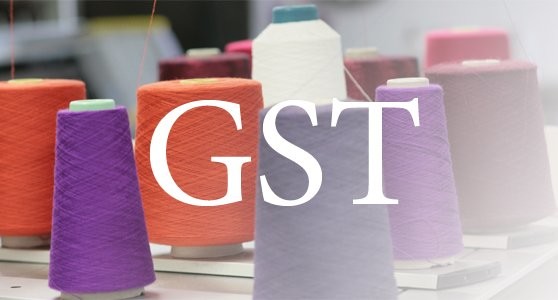
When Finance Minister Nirmala Sitharaman rose to chair the latest GST Council meeting, few expected the sweeping changes that would follow. Yet, what emerged was a long-awaited relief package for India’s fashion and textile industry, an industry that employs nearly 45 million people and contributes about 2 per cent to the country’s GDP.
The Council’s decision to reduce taxes across the textile value chain is being hailed as a watershed moment for an industry often strangled by complex tax structures and inverted duty anomalies. For consumers, it means lighter bills at the checkout counter; for businesses, it translates into improved margins, competitiveness, and hope for revival at a time when global headwinds threaten exports.
A closer look at the GST overhaul
The Council’s reforms touched nearly every stage of the industry’s value chain from fibers to finished garments.
Table: Changes in GST
|
Segment |
Earlier GST rate |
Revised GST rate |
Impact |
|
Apparel & Footwear (up to ₹2,500) |
12% (above Rs 1,000) |
5% |
Wider affordability for middle-class buyers |
|
Man-Made Fibres (MMF) & Yarns |
18% |
5% (uniform across textiles) |
Resolves inverted duty structure, aids manufacturers |
|
Packaging Materials (cartons, boxes, etc.) |
12% |
5% |
Reduces input costs for exporters and brands |
|
Threshold for Garments |
Rs 1,000 |
₹2,500 |
Expands low-GST bracket, boosts mid-market demand |
For years, the inverted duty structure where raw materials were taxed higher than finished products had distorted supply chains. By ironing out these anomalies, the government has signaled that it wants to put textiles, one of India’s oldest industries, on a stronger footing.
Industry gives ‘Wow’ with a word of caution
“This is nothing short of a big wow for Indian citizens,” said Sanjay K Jain, Chairman of the ICC National Textiles Committee. “Lower GST means lower inflation, higher disposable incomes, and healthier balance sheets for textile firms. It’s a triple win.”
The Clothing Manufacturers Association of India (CMAI) welcomed the changes as it says, the government has accepted two major requests of the industry, removal of the inverted duty structure by making the entire value chain from fibre onwards charged at one rate that is 5 per cent and adopting a fiber-neutral policy, by equating the MMF and cotton fiber chains. The increase of 5 per cent limit from Rs 1000 to Rs 2500 is also an extremely positive move. However, Rahul Mehta, Chief Mentor of the Clothing Manufacturers Association of India (CMAI), warned that the reforms must be implemented carefully. “Uniformity of rates is welcome, but execution matters. If inverted duties creep back due to policy misalignments, we could lose the competitive advantage we just gained,” he said.
Why to consumers
The reforms are particularly significant for India’s growing middle class. Footwear and apparel are essential lifestyle spends, but with inflation eating into household budgets, affordability has been a key concern. By lowering GST on products up to Rs 2,500, the government has ensured that branded shirts, saris, sneakers, and formal shoes fall within reach for millions of consumers.
Table: Impact on consumers
|
Product |
Earlier price in Rs (Incl. 12% GST) |
Revised price in Rs (Incl. 5% GST) |
Savings |
|
Cotton Kurta priced 1,800 |
2,016 |
1,890 |
126 |
|
Sneakers priced 2,400 |
2,688 |
2,520 |
168 |
|
School Uniform set (1,200) |
1,344 |
1,260 |
84 |
For an average family of four, annual apparel and footwear purchases could now cost Rs 3,000-4,000 less, a meaningful saving in urban as well as Tier-II, III cities.
The export dimension
India’s textile and apparel exports were worth Rs 41.5 billion in FY2024, with garments making up nearly half. But the industry has struggled in recent months due to falling global demand and stiff tariffs particularly from the US, where additional duties of up to 50 per cent loom large.
The GST reforms, while domestic in nature, are expected to strengthen India’s cost competitiveness abroad by reducing input costs. Exporters in hubs like Tiruppur, Surat, and Ludhiana believe this will help them undercut competition from Bangladesh and Vietnam.
Table:
|
Market |
Export value ($ bn) |
Share in total exports |
|
US |
11 |
26% |
|
EU |
9.2 |
22% |
|
UAE & Middle East |
5.4 |
13% |
|
Others |
15.9 |
39% |
|
Total |
41.5 |
100% |
Global buyers are extremely price-sensitive. Every percentage point in tax reduction helps Indian manufacturers to bid more competitively, say Tiruppur- exporters who supply cotton T-shirts to US retailers.
Implementation will be key
While industry bodies have celebrated the reforms, experts caution that GST compliance and refund delays remain a thorn. Small and medium enterprises (SMEs), which account for nearly 80 per cent of India’s apparel output, often struggle with blocked working capital due to late refunds. “The uniform GST rate is historic, but it must be backed by faster refunds and simpler filing. Otherwise, cash-flow problems will continue,” noted Anupama Dalmia, a textile policy analyst.
Overall the GST reforms are being seen as more than just a tax cut they are a reset button for India’s textile and fashion sector. By reducing costs for both producers and consumers, the reforms promise to drive demand, unlock competitiveness, and revive an industry that is both a cultural mainstay and a critical job generator.
As the festive season approaches, retailers expect an increase in sales, while exporters eye a stronger global presence. But the true test will lie in implementation: whether the system can deliver on the promise of simplicity and speed. For now, the industry is cautiously optimistic its fabric stitched together by a tax system finally designed to support, not stifle, its growth.

The mid-2025 stage is important. As the world inches toward 2030, the fashion industry finds itself at a crossroads between regretful delays and transformative potential. The Apparel Impact Institute’s (Aii) latest report, ‘Taking Stock of Progress Against the Roadmap to Net Zero (2025)’, doesn't just measure emissions, it highlights a story of imbalance, ambition, and opening pathways.
A reality check on the Numbers and stakes
Fashion once comfortably occupied the shadows of climate discussions. But that has changed. The Aii report underscores that while in 2021 the sector accounted for about 1.8 per cent of global greenhouse gas emissions, already an alarming figure, this could climb to 1.27 gigatonnes by 2030 if current trends continue. To stay on track with the 1.5°C pathway, emissions must fall to roughly 0.489 gigatonnes by 2030, a daunting but achievable goal only with collective resolve.
The report shows emissions are not evenly distributed across the supply chain. The largest source of emissions, at 55 per cent, is Tier 2 textile processing. This includes textile formation, preparation, coloration, and finishing. Raw material production follows, accounting for 22 per cent of emissions. Raw material processing (Tier 3) accounts for 15 per cent and finished goods manufacturing that is Tier 1 accounts for 8 per cent.
The timing couldn't be more urgent. Brands are faltering as a survey revealed that while half of major players have set science-based targets, 40 per cent actually saw increases in emissions last year many without offering tangible support to their suppliers.
Manufacturers step into the fray
In this tense reality, a subtle shift is happening not at the top, but in the workshop, the dyeing floor, and factory roofs across Asia. As global brands hesitate, manufacturers in India, Bangladesh, Vietnam, and China are stepping up with action. A garment maker in India, for instance, is constructing a net-zero factory powered by solar and biomass climate-resilient, worker-safe, and built for extremes of heat. Such initiatives signal that decarbonization momentum may be shifting toward the Global South’s factories.
Despite sobering numbers, the report strikes a hopeful note: change is underway. More than 600 apparel companies have now committed to science-based climate targets, placing the sector ahead of most industries in its race to decarbonize. On the ground, progress is visible. In Pakistan, Artistic Milliners has added 100 MW of wind power to the national grid, while China’s Shenzhou Group now sources over 60 per cent of its electricity from renewables and is pushing toward a full coal phase-out by 2030.
In materials innovation, Ambercycle is turning polyester waste into new fiber at half the carbon cost of virgin polyester, backed by a €70 million pledge from Inditex. Meanwhile, Taiwan’s Far Eastern New Century cut more than 36,000 tonnes of emissions in a single year through energy efficiency projects. Together, these examples highlight a sector experimenting boldly with solutions. The momentum is real—but the report makes clear that scaling such efforts is essential if the industry is to meet its climate commitments.
The investment gap between India and Bangladesh India’s ambition is monumental. The government envisions tripling the fashion sector’s value to $350 billion by 2030, pushed up by mega-parks and two million new jobs. At the same time, decarbonization is essential not optional.
Aii and Development Finance International revealed that India needs $6.5 billion to cut apparel emissions by 45 per cent by 2030 but only has access to $2.5 billion, leaving a $4 billion hole. Still, India has strengths to leverage: a strong network of energy-efficiency service providers, falling solar prices, supportive policies like electricity wheeling reforms, and innovative design models such as the ‘Future Forward Factory’ that offer modular, near-net-zero solutions.
On the other hand, Bangladesh’s apparel sector is the backbone of its economy and is deeply exposed yet increasingly proactive. Over 80 per cent of its exports now come from garment production, which also employs millions of workers mostly women.
A recent Aii-DFI report reveals that $6.6 billion is needed to halve emissions by 2030. Of that, only $1.6 billion is available, with a further $175 million anticipated leaving a $4.8 billion gap. Yet despite challenges limited rooftop space, energy infrastructure hurdles, and modest policy support suppliers are innovating. Bangladesh hosts over 240 LEED-certified factories, the highest globally, and is piloting solar PV, energy-efficiency programs, and technical readiness initiatives
Blueprints for collective action
The report offers more than diagnostics, it reveals how solutions might scale. For example, the Fashion Climate Fund, backed by H&M Foundation and Aii, already supports hundreds of high-emission facilities across India, Bangladesh, China, and Vietnam. It blends funding, technical support, and data transparency, targeting reductions of 30-50 million tonnes CO₂ by 2030 from just this initiative.
Similarly the Future Supplier Initiative, a partnership between The Fashion Pact and Aii, brings with brands like H&M, Gap, Mango and banks together to co-finance decarbonization projects in Bangladesh, layering technical assistance on top of de-risked loans.
In Bangladesh, Aii's Climate Solutions Portfolio, underwritten by grants and revolving funding, provides live data on interventions like rooftop solar and wasteheat recovery showing that decarbonization can deliver real returns.
A call to action
Indeed, fashion’s climate journey is a complex weave of energy, finance, materials, and policy. The report concludes with a call to action for all stakeholders. It emphasizes that the gap between what's needed and what's happening isn't a gap in ideas, but in action, investment, and scale. The path forward requires coordinated efforts from brands, manufacturers, and financial institutions.
For brands and retailers, this means making financing a core part of their strategy, prioritizing proven solutions from registries like Aii's Climate Solutions Portfolio, and aligning their sourcing to favor low-carbon suppliers. Manufacturers are urged to adopt cost-saving solutions, engage in climate programs like the Manufacturer Climate Action Program (MCAP), and publicly share their progress. Finally, financial institutions and philanthropies are called upon to support catalytic models and develop financial instruments that directly reward emissions reductions
Of course, Aii's 2025 report isn’t a final verdict it’s a challenge issued. It reminds us, that global goals cutting emissions in half by 2030 can still be met, if the world acts. India and Bangladesh are at the vanguard; their factories are laboratories for what’s possible. Aii's funds and alliances are the infrastructure. The path to net zero in fashion may just begin with humility—as well as ambition—rooted in the factory dust and powered by the sun.
Primark has launched its first-ever integrated UK brand campaign to promote a new and improved Autumn/Winter women's denim range. Titled ‘In Denim We Can,’ the campaign aims to make consumers reconsider how much they should spend on a great pair of jeans.
The campaign highlights the work Primark has done over the past year to refine the fit, sizing, styles, and overall quality of its denim collection. Shoppers can now experience these improvements firsthand in all UK stores and through the Click & Collect service.
Primark spent more than a year listening to customer feedback to improve the consistency of its sizing and fit. The new collection introduces a new base size and standardized waist and leg lengths to ensure a more consistent and flattering fit. After extensive testing, the brand is launching with 10 key denim styles - from classic skinny and straight cuts to trendy barrel and wide-leg shapes - along with matching denim jackets, shirts, and tops.
The collection also reflects Primark’s broader commitment to sustainability. All eligible denim has gone through the retailer’s durability framework, and all jeans in the campaign are made with recycled cotton or cotton from the Primark Cotton Project. Three of the 10 jean styles are designed with circularity in mind, made without elastane or metal rivets so they can be more easily recycled.
Primark is also updating its in-store denim sections later this year with a new look and feel to make it easier for customers to explore and try on the new styles.
The standout piece of the new line is the 100 per cent cotton palazzo jean, priced at just £12 (about $16.70). Available in a mid-blue and an almost-black wash, this new product is the first item to be featured in Primark's new ‘Major Finds’ promotion. This initiative will highlight on-trend products and styles at unbeatable prices, available in-store and through Click & Collect while supplies last.
According to Mary Lucas, Director-Womenswear Trading, Primark, the company is raising the bar on its denim and is confident it is their ‘best one yet.’ Matt Houston, Chief Customer and Digital Officer, believes, the campaign will remind customers that Primark offers ‘quality, style and incredible value’ in its denim.
Sri Lanka's garment exports grew by 9.09 per cent in the first seven months of 2025, reaching $2.92 billion, a notable increase from the $2.67 billion recorded during the same period in 2024. This growth was fueled by strong demand for apparel in key international markets.
Exports to the European Union (excluding the UK) increased by 18.2 per cent, while shipments to ‘Other’ markets grew by 11.02 per cent. Exports to the United Kingdom experienced a more modest gain of 5.65 per cent, and those to the United States increased by 2.91 per cent.
While textile exports declined by 3 per cent in H1, 2025, the combined value of textile and garment exports still accounted for more than half of the country's total industrial shipments. The month of July alone saw a 9.84 per cent rise in exports, and a rise in apparel imports indicates a revival in domestic consumption. This consistent growth across major markets highlights the Sri Lankan apparel industry's strong global position and adaptability.

